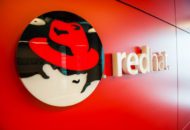We have survived the year 2000! Despite numerous warnings of impending doom, Microsoft’s standard software has still accounted for the majority of computer crashes! Was the whole Y2K exercise simple a confidence trick worked by consultants in order to generate yet more profit? I don’t think so.
For once the IT industry proved up to the task and responded to the challenge. The main reason that the millennium passed without too much trouble was due to the huge effort made to detect and correct problems before the year end. There was a lot of nonsense talked about the IT industry over exaggerating the problem but I don’t think that was true, it would have been disastrous without the concerted corrective action. Thank goodness for Cobol!
However, no sooner had the industry heaved a sigh of relief than it was hit by major problems in the stock market. Technology stocks in general, typified by NASDAQ, started to fall, for a number of reasons. And they have by no means stopped falling yet; indeed 2001 promises to be more problematic! IT practitioners cannot ignore this situation, because falling stock values significantly impacts on profits and thus on investment in development and support. It will make thing uncomfortable for everyone.
It is possible that the Technology stock values are being influenced by a general worldwide recession, but within the IT industry there were two key influences. First the IT stock was grossly over-valued and secondly the dot.com fiasco has starved the real developers of venture capital.
The boom in IT stock over the past few years has largely been fuelled by the terrific growth of Microsoft, Intel, Oracle and Sun, not forgetting IBM and H-P. The trouble is that while they all deserved to see their value increase, it increased far too much! There was simply no way in which the industry could sustain growth commensurate with the bloated stock ratings. There was only one possible outcome, the bubble must burst. When was not so obvious, but it proved to be late 2000. It continually staggers me that so-called professional pundits can only extrapolate curves upwards, with no thought for the inevitable peak and the following decline. The PC was the product of the 90’s just as the minicomputer dominated the 80’s and just as the minicomputer disappeared, so will the PC. As the minicomputer faded, so too did the minicomputer manufacturers and so too will many of the current PC product suppliers. It is very informative to note historically that a new market is usually dominated by new suppliers, few established companies being able to make the translation, mainly because the business model usually changes as well. It isn’t that Microsoft are incapable of porting Office 200x to Linux, it is the $50 price tag that is expected that they can’t cope with.
Just as the collapse of the NASDAQ shares was inevitable sooner or later, the failure of the dot.com revolution was equally predictable. In general there are three requirements for a web-enabled business, (i) a user friendly browser interface, (ii) a market presence and (iii) a logistic business system. With few exceptions the dot.com start-ups targeted (i) and (ii) but had no (iii)! The exception was Amazon.com; because they were the first, they were given free advertising and still they have failed to perform. What chance have the others who spend at least half of the investors money on advertising? Selling TV and billboard advertising space is the only profit earner in the whole dot.com sector!
To succeed all three elements are needed and so the trend now is for established companies to add to their conventional retail outlets a Web-enabled option. Since most are known already to the public there is a relatively low expenditure on creating market awareness. But the key benefit lies in the existing IT systems. It is no fluke that Dell, for instance, has been so successful because their Web-enabled system allowed customers to enter orders, which were fed into an existing production control system. The key to e-commerce success in the future lies in integration of Web front-ends with legacy business systems. And that means a direct impact on the IT industry!
Finally can we make a plea for better quality user interfaces. Most Web sites are, to put it politely, not easy to use. The art of simplicity is being ignored because most Web systems are being designed by "tech-wizards", who sacrifice ease-of-use for fancy tricks, the same desease that has made PC products so hostile to the user.





